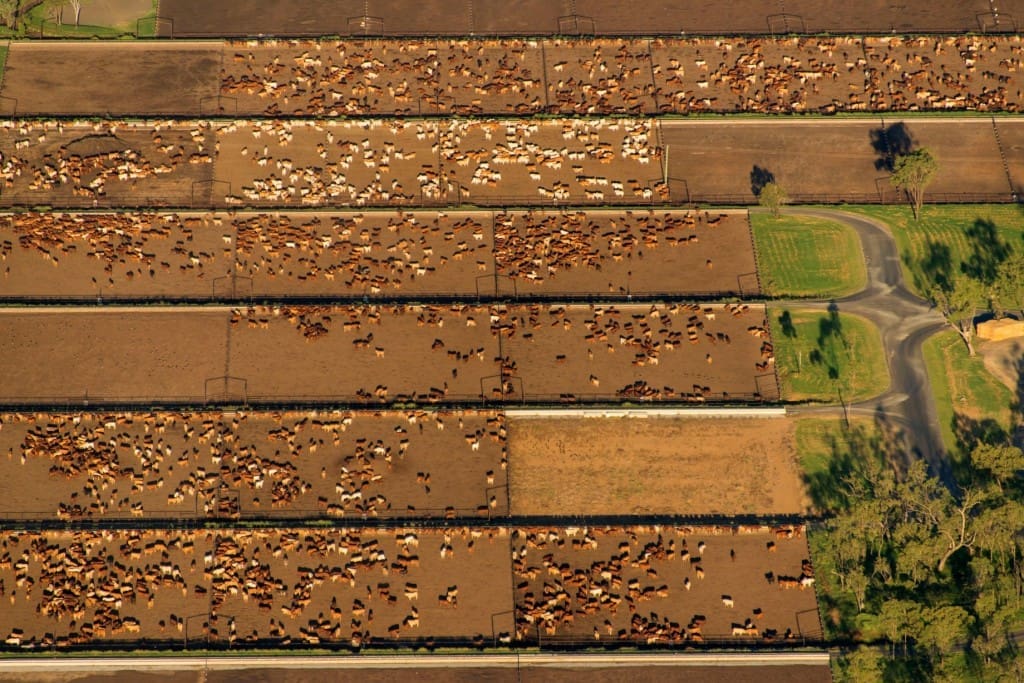
GRAINFED production is set to play a larger role in Australia’s beef sector, with the opportunity to triple the nation’s exports of grainfed beef to China by 2030, according to new industry research.
In its report, Opportunities for growth in Australian grain-fed beef, Rabobank says while the backbone of the Australian beef industry will remain a grass-based production system, grain feeding is forecast to play an increased role in the country’s overall beef production over the next ten years.
Continued growth in beef consumption in Asian countries, particularly China – along with Australia’s strong market access and competitive supply chain – will provide the opportunity for the nation’s total grainfed beef exports to increase 65 percent to more than 500,000 tonnes by 2030, according to the research.
Exports of Australian grainfed beef to China alone could triple in the same period, from the current 50,000t to close to 200,000t.
“Rabobank believes there will be strong growth in the global demand for grain-fed beef, fuelled principally by China,” the report said.

Angus Gidley-Baird
Report author, senior animal proteins analyst Angus Gidley-Baird acknowledges Australia’s vast areas of grazing land – and limited and volatile feedgrain production – suit a grass-based beef production system.
However, at a time where China is the centre of global beef demand, there is an opportunity to capitalise on the growing need for grainfed beef for part of the Australian industry, he says.
“Since the opening of the Chinese market more widely to Australian beef imports in 2013, and with a growing appetite for beef among Chinese consumers, there has been an increasing demand for grainfed product,” he said.
“Chinese beef consumption will continue to grow over the next decade and, with limited growth in local Chinese beef production, imports will play a much larger role in meeting this demand.
“At the same time, consumers in Asian markets, including China, have a strong affinity with highly-marbled grainfed beef as it suits their palate and cuisine, fuelling a demand for grainfed beef imports that has the potential to grow at a faster rate than overall beef imports.
Given projections in Chinese income growth, per capita consumption of beef and food service trends, Rabo’s report says it is ‘reasonable’ to expect Chinese grainfed beef imports to grow to represent 20pc of China’s total beef imports by 2030, up from an estimated 6pc today.
Risk attached
However, the report says, while increasing Australia’s focus on grainfed beef production is an opportunity worth pursuing, it comes with risks and challenges.
While Australia is in a strong position to capture a sizeable portion of the growing global demand for grainfed beef, particularly in China, the report says it will not be on its own. Other major grainfed beef exporters – primarily the US, Canada and also likely South American countries in the future – are also expected to increase their export volumes.
But the good news is, says Angus Gidley-Baird, with the Chinese market forecast to require close to 500,000t of grainfed beef exports by 2030, “there will be enough room for everyone”.
Rabobank believes that the other suppliers of high-quality grainfed beef would not fill more than 300,000t of this increased Chinese demand, he said.
“Given the potential size of the Chinese grainfed beef market and, provided Australia is competitive on price, the opportunities for Australia will likely outstrip the production growth of grainfed beef in Australia,” he said.
Competitive position
Although Australia’s grainfed system is faced with higher feeding and processing costs than the US and Brazil, the reports says costs of cattle, reduced freight costs and free trade agreements “balance out the equation” when it comes to being competitive in export markets.
“As such, we believe Australian grainfed beef, with its own particular characteristics, can be competitive in the global market for grainfed beef,” Mr Gidley-Baird said.
If Australia is to compete successfully with the US and Brazil though, the report says, the local industry will need to increase the number of genetically-suitable cattle and the number of cattle that spend a longer time on feed.
“The real value of grain feeding cattle destined for a higher-end Asian export market is in the ability to more consistently deliver a high degree of marbling,” Mr Gidley-Baird said.
“Australia lags the US in terms of higher marbled beef production. Generally speaking, Australia’s grainfed beef production is less focussed on marbling, with less time spent being grain fed and lower marbling scores.”
Maximising chances
Maximising the chances of growing grainfed beef exports to meet increased global demand will require adjustments to the Australian beef system, the report says.
“Producers, backgrounders, feedlots and processors will all need to work together – a challenge in the current system which is heavily influenced by the availability of grass,” Mr Gidley-Baird said.
“Producers and backgrounders will need to deliver consistent volumes of high-quality feedlot-performing animals. And choosing cattle genetics that perform under a feedlot environment and produce the desired quality traits will be essential.
“Feedlots will need to manage feed grain supplies and encourage crop farmers to focus on feed-grain production while processors will need to play an active role in incentivising and providing market information to encourage the supply of appropriate animals for the system.”
External challenges
There are also a number of challenges outside the sector itself which need to be considered and managed, the report says. These include social and environment issues (such as concerns about animal welfare and environmental impacts of feedlot production), the use of Australia’s valuable grain supply for animal production and an increasingly volatile global trade outlook.
Source: Rabobank

I’d have to challenge the report’s stated assumption that “Chinese consumers have a strong affinity with highly-marbled grainfed beef, as it suits their palate and cuisine.”
I see no evidence for it. The statement implies that the Chinese consumer is exactly the same as the Japanese and Korean consumer’s preference for marbled beef, which is simply not the case. The fact is all exports to China – grass and grain – have risen dramatically in the recent past. Seasonal conditions have dictated that a larger percentage of that has been grainfed in the past two years. Don’t fall for the trap of applying a ‘cookie-cutter’ approach to beef preferences and tastes across all of North Asia.
And critically, none of this forecast expansion can happen without significant breakthroughs in market access, both chilled and frozen. There has been zero progress in getting more Australian beef plants approved for export to China, either chilled or frozen, while dozens of additional plants have been added in Brazil this past year. The report makes no mention of this.